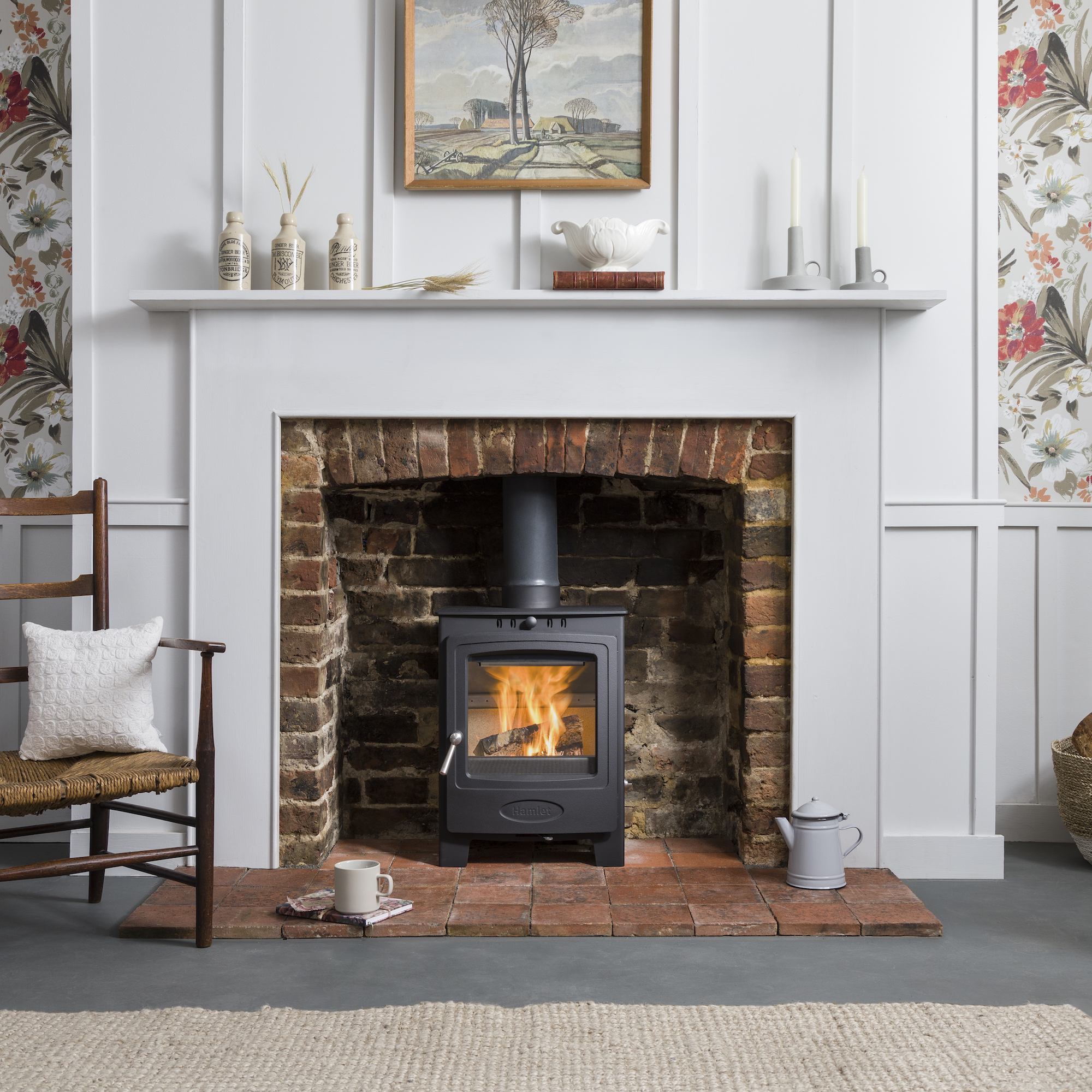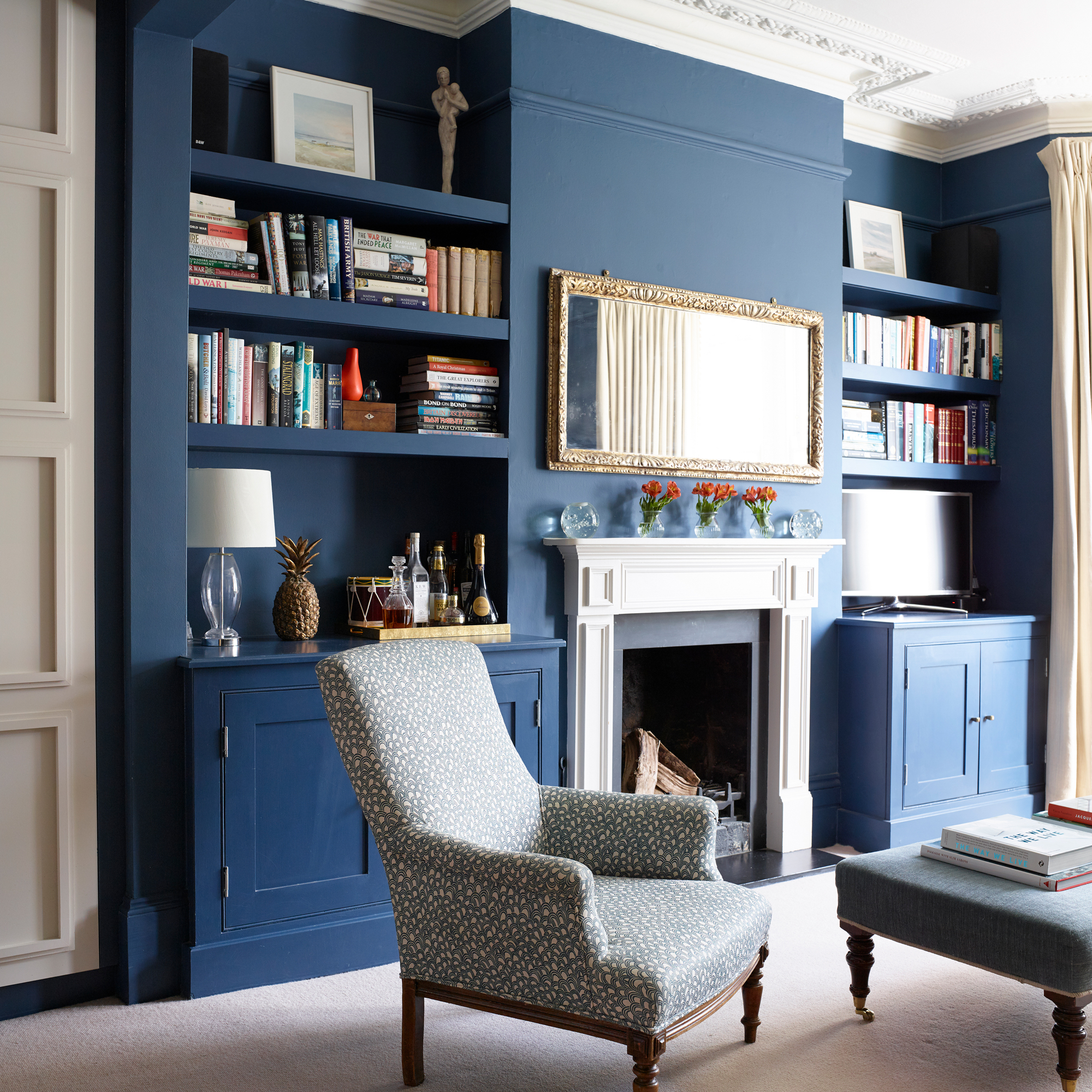How to clean a chimney, where to find the right chimney sweep, and signs it needs sweeping for winter
Knowing how to clean a chimney right is crucial, as if you get it wrong, it could cost a small fortune to repair the damage

Lauren Bradbury

EDITOR’S NOTE: An earlier version of this article included a quote from a purported expert whose credentials we have not been able to verify. The quote has been removed. We regret this lapse in our verification process and have updated our internal protocols to reduce the risk of recurrence.
While the idea of a chimney sweep may seem old-fashioned and reminiscent of ‘Mary Poppins’, knowing how to clean a chimney is an essential part of home ownership.
Yes, we think you’ll agree that there’s nothing better than sitting in front of your living room fireplace as the nights get darker and the days get colder. The crackle of a roaring fire and the heat it gives off can really turn a house into a home - not to mention the fact that it can lower your gas bill.
But it’s important to understand that an open fire is so much more than a warming winter decoration. It’s crucial that homeowners clean a chimney properly, or they risk suffering the consequences. And that’s why we’ve put together the ultimate chimney guide. From how to clean a chimney to knowing how to find the perfect chimney sweep, we’ve covered it all.

Why you should sweep your chimney
There are two main reasons to sweep your chimney – to ensure your fire burns efficiently, and to reduce the risk of a chimney fire. Regular sweeping removes any build up of flammable materials, such as coal soot or wood tar, which can otherwise build up to the level where they ignite.
Thankfully, chimney fires are far less common than they used to be, with 2,608 occurring from 1 April 2021 to 31 March 2022. Government fire statistics show that the number of chimney fires has fallen 66% over the previous decade, and account for less than 2% of total fires in the last year.
That said, 2,608 fires is still significant, and with more of us turning to wood burning for heat to save money, the trend could reverse.
HETAS is a non-profit organisation that accredits approved heating installers, retailers and chimney sweeps, as well as appliances and fuels. Its CEO, Bruce Allen, says, ‘Over the last ten years, the number of chimney fires has decreased, but there is still more we can do to take action against the risk of chimney fires. It’s really important that we continue to help people find and use approved professionals for sweeping and maintaining their appliances and chimneys efficiently and safely.’
Sign up to our newsletter for style inspiration, real homes, project and garden advice and shopping know-how

How do you find the right chimney sweep?

Although there are many people out there who could clean your chimney for you, that doesn’t mean that they should. To find the right chimney sweep, you need to consider a few things.
Firstly, you should make sure that your chimney sweep is registered with HETAS. This is a way to ensure they are properly trained in terms of process and safety standards.
Secondly, you should make sure they have liability insurance. This provides peace of mind that you won't be left out of pocket should anything go wrong.
Of course, as with hiring any tradesperson, it’s also a good idea to consider their reputation. If possible, read online reviews from previous customers. And while word-of-mouth recommendations from friends and family are helpful, you should always do your own research to ensure it’s the right fit for you.
How to clean a chimney
Step-by-step guide
1. Inspect your chimney
Before you call your sweep, inspect your chimney and flue from both the inside and outside of the house. Look for any signs or nesting birds and animals, and for any cracks or damage that could be cause for concern. It’s helpful to alert your chimney sweep to anything you’ve spotted.
2. Identify your flue liner
If you have a modern chimney or renovated house, your chimney may have been fitted with flexible metal tube liner that help to channel smoke and particles through the stack and out into the open.
If you have a liner, it’s worth letting your sweep know before they come to clean it, since the job may need to be done in a different way.
3. Book a chimney sweep
‘HETAS operates a chimney sweeps’ approval scheme that ensures all approved sweeps are trained and experienced in their work,’ says Bruce Allen.
The scheme works with both chimney sweep trade organisations and independent sweeps, and the list is comprehensive. To find a sweep in your area, visit HETAS online or call 01684 278170.

4. Declutter your fireplace
‘It’s helpful to a chimney sweep if you do a little prep work to make sure a professional has a clean and safe space to work,’ says Colin Burton. ‘Clear the mantelpiece and fireplace of any ornaments or valuables as it can be quite a messy job. You may even want to cover furniture just in case, especially if it hasn’t been swept for a while – I say this speaking from experience!’
The vast majority of chimney sweeps will bring their own protective coverings and do their utmost to ensure your decor isn’t damaged.
5. Remove any leftover wood or fuel, and piles of ash
Make sure you’re wearing clothes you don’t mind getting dirty for this job, and protect the surrounding areas with sheets.
Fireplace specialist Glowing Embers recommends that you ‘start by moving any large pieces of debris with your hands and placing them straight in your bin bags. If you don’t want to get too dirty, use a dustpan and brush to help you move some of the debris. When you’ve got rid of the big pieces, use a handheld vacuum cleaner to help with the smallest bits.’
6. Let the sweep do their job
Now it’s over to your chimney sweep. A standard sweep (known as a Level 1 inspection and sweep) will involve them checking your chimney from the inside using a torch and perhaps a camera.
They'll look for signs of obstructions like birds nests, and any build up of creosote and soot. They won’t need to access your roof. They may alert you to any signs of damage, which will need to be dealt with separately by a professional.
Then, they will prep the space for cleaning, and use poles, brushes and a vacuum to clear your chimney.
7. It’s your turn to tackle the brickwork and grate
Once the chimney is swept, you can finish the job. Remove the fire grate and clean it with soapy water. Glowing Embers suggests that you clean the brick surrounds with ‘a solution made from cream of tartar and water. If you have a soot stain that’s particularly stubborn, you may need to use a specialist cleaning solution, like a trisodium phosphate cleaner.’ We like the Intralabs Trisodium Phosphate Industrial Cleaner, £7.29, Amazon.
If you do use trisodium phosphate, also known as TSP, be mindful that it is toxic and can be dangerous if used incorrectly. Always wear protective gloves, goggles, and make sure your arms and legs are fully covered. Prepare using the instructions on the packaging.

6 signs your chimney needs sweeping
Aside from knowing its time for your annual or bi-annual sweep, there are extra signs that your chimney needs sweeping sooner rather than later. ‘If you’re not sure when you last had it checked, there are some “smoke signals”, so to speak, to look out for,’ says chimeny expert Colin Burton.
‘If the fireplace surround is turning black, soot’s dropping down into the chimney, or there are any unpleasant lingering smells, it’s a warning sign to get your chimney swept.’
Here’s a more comprehensive list:
- You suspect that birds or other animals are nesting in your chimney. You might spot birds gather at your chimney stack or hear regular scratching noises.
- Soot is blowing into the room or falling back down the chimney into your hearth.
- You struggle to keep your fire lit or it doesn’t burn as strongly as usual. This is called ‘bad drafting’.
- There is a bad, creosote or tar-like smell – even if the fire isn’t lit.
- You can see very dark smoke coming out of the chimney.
- Your fire surround has turned black with soot.

FAQs
How much does a chimney sweep cost?
A basic chimney sweep costs around £65 on average. That’s according to Colin Burton – Rated People’s roofing and chimney specialist, who runs the Edinburgh-based CBR Roofing and Maintenance. ‘The cost varies depending on the level of inspection required,’ he explains. ‘It’s also seasonal and depends on where you are in the UK.’
According to tradesperson sourcing service My Builder, you could be paying more in an urban area where demand is high – and particularly in London. ‘On average, we have found that a chimney sweep will cost £50 to £80 in most parts of the country, and closer to £90 or more in London,’ they explain.
How often should you sweep a chimney?
This will depend on a few different factors – most importantly, the fuels you use. If you are burning smokeless fuels, HETAS recommends an annual inspection and sweep. But if you are regularly burning wood or bituminous house coal, you should get the chimney swept at least twice a year, if not more often.
‘As a general rule of thumb, have it swept every 12 months to keep your fireplace healthy,’ says chimney specialist Colin Burton. ‘However, if you’re burning wood or coal, it’s best to do this every three month due to the build-up of soot.’
Getting your chimney swept should be top of your autumn deep-clean to-do list, especially if it hasn't been used in a while. So, aim to get it done before you start using it to heat the house through the winter, then again in spring once it’s been out of action for a few weeks.
Can a dirty chimney invalidate your house insurance?
Many homeowners are guilty of doing things that will invalidate their home insurance, and it’s even been suggested that a dirty chimney can do the same. Of course, this is dependent on your provider and their specific terms and conditions. So, it’s always a good idea to thoroughly check your policy.
But even if a dirty chimney won’t invalidate your home insurance, it’s still a good idea to keep it in good condition and well maintained.
Can I sweep my chimney myself?
There isn’t a simple yes or no answer to this question. That’s because it all boils down to your insurance policy. Some insurers require you to get your chimney cleaned by a certified professional (and some even require a certificate of proof), while others are a little more lenient.
But while this means that you technically could sweep the chimney yourself, it’s not recommended - as you really don’t want to play with fire. Professional chimney sweeps are required to follow strict health and safety guidelines when undertaking each job, and it’s just not worth the risk.
For the safety of your home and your family, you should always get a trained professional to tackle this task.
Can you clean a chimney from the top down?
When you’re in the process of hiring a chimney sweeper, it might be a good idea to ask them which way they plan on cleaning your chimney. That’s because, while there are two ways to clean a chimney, it’s generally suggested that cleaning from the top down is the best way.
By going onto the roof and cleaning from the top, the chimney sweep can ensure that every aspect of the chimney - including the damper, chamber and flue - is completely cleared of soot and dirt.

Amy Cutmore is an experienced interiors editor and writer, who has worked on titles including Ideal Home, Homes & Gardens, LivingEtc, Real Homes, GardeningEtc, Top Ten Reviews and Country Life. And she's a winner of the PPA's Digital Content Leader of the Year. A homes journalist for two decades, she has a strong background in technology and appliances, and has a small portfolio of rental properties, so can offer advice to renters and rentees, alike.
- Lauren BradburyContent Editor (House Manual)